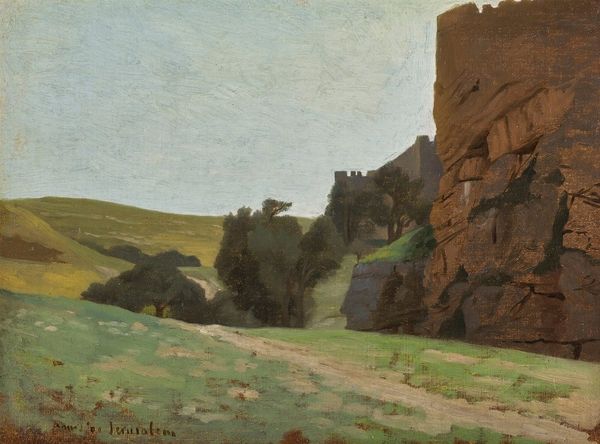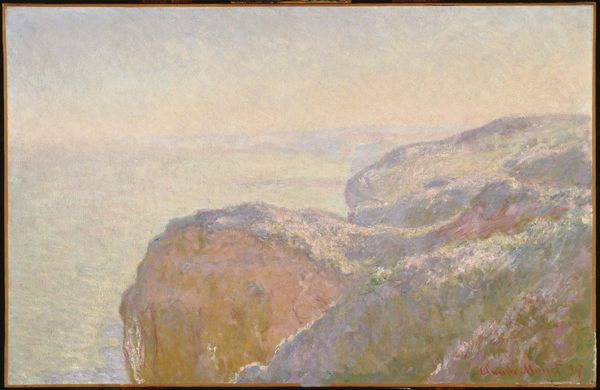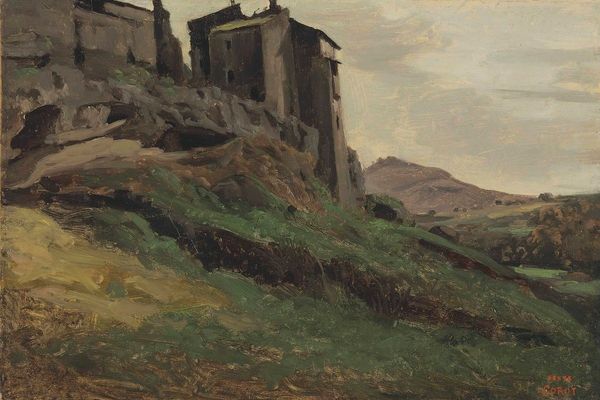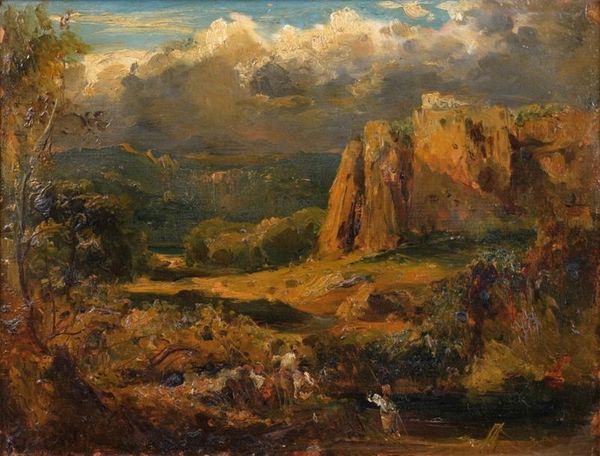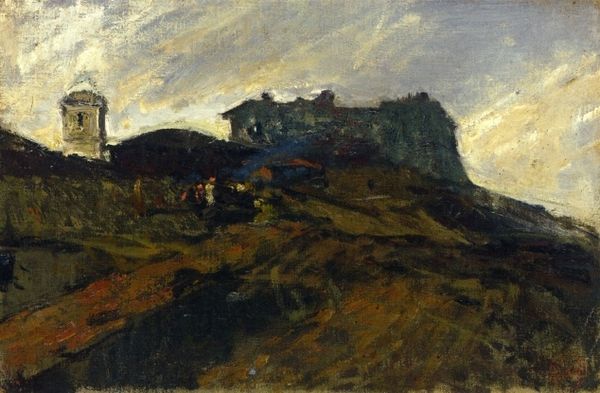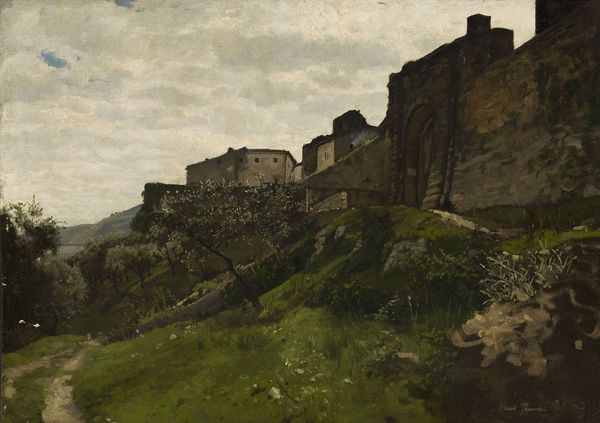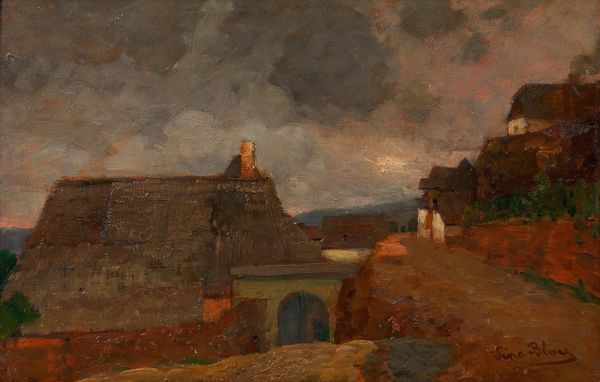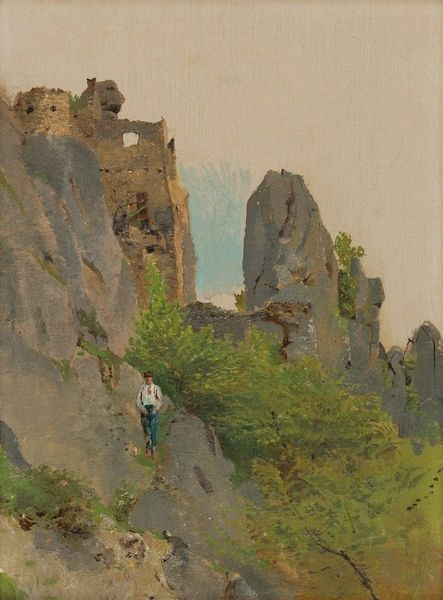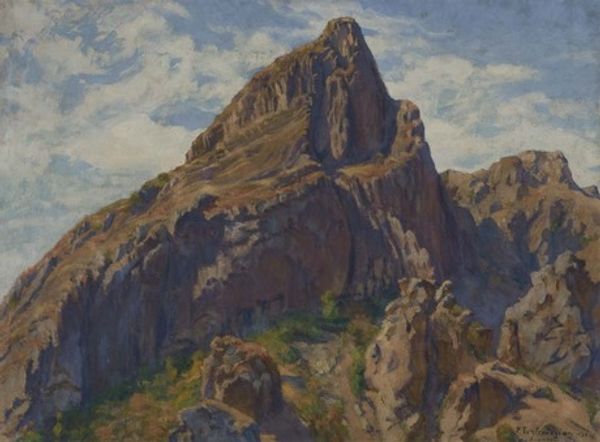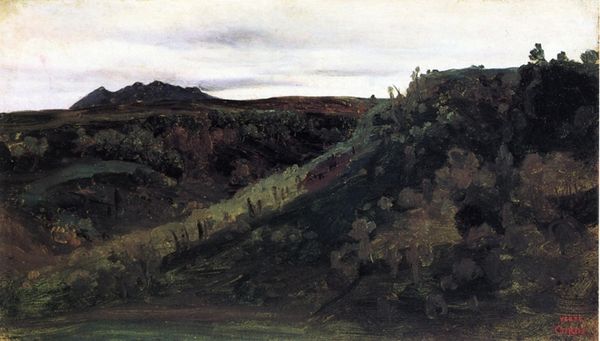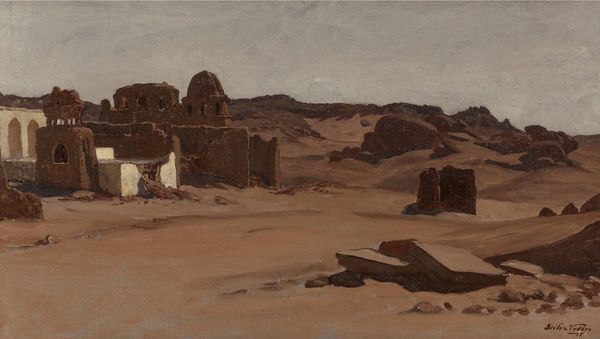
Copyright: Public Domain: Artvee
Editor: So, this is Armand Guillaumin's "Les Ruines Du Château De Crozant," painted in 1898. It’s an oil painting. There’s something wistful and dreamy about the ruined castle against that hazy sky. What jumps out at you? Curator: The subject matter, for one. Ruins became popular Romantic and then Realist subject matter. Why, do you think, did artists focus on ruins? This particular ruin carries a long legacy; by the late 19th century it was something of a tourist attraction, indicative of larger social forces connected to the rise of leisure travel. Guillaumin's interpretation highlights not just the physical decay but also hints at the fading significance of feudal power structures in a rapidly changing France. The soft, impressionistic style softens even further the historical connotations, domesticating them, if you will, for public consumption. Editor: So, he's presenting a kind of sanitized version of history for the middle class? That's interesting. I hadn't thought about tourism being so impactful on how artists portrayed historical sites. Curator: Precisely! And consider the technique. Oil paint was commercially produced, available to a much wider public and taught in numerous ateliers. The ruins, accessible. The paint, accessible. Is Guillaumin questioning or supporting the historical narrative represented in Crozant? Does this portrayal offer nostalgia, critique, or simply artistic exploitation of a visually compelling site? Editor: I suppose a bit of all three? Maybe that tension is what makes it so compelling. I see the piece in a whole new light. Thanks! Curator: My pleasure. Reflecting on how institutions, technologies, and cultural trends influenced this artwork has changed my perspective on Guillaumin.
Comments
No comments
Be the first to comment and join the conversation on the ultimate creative platform.
